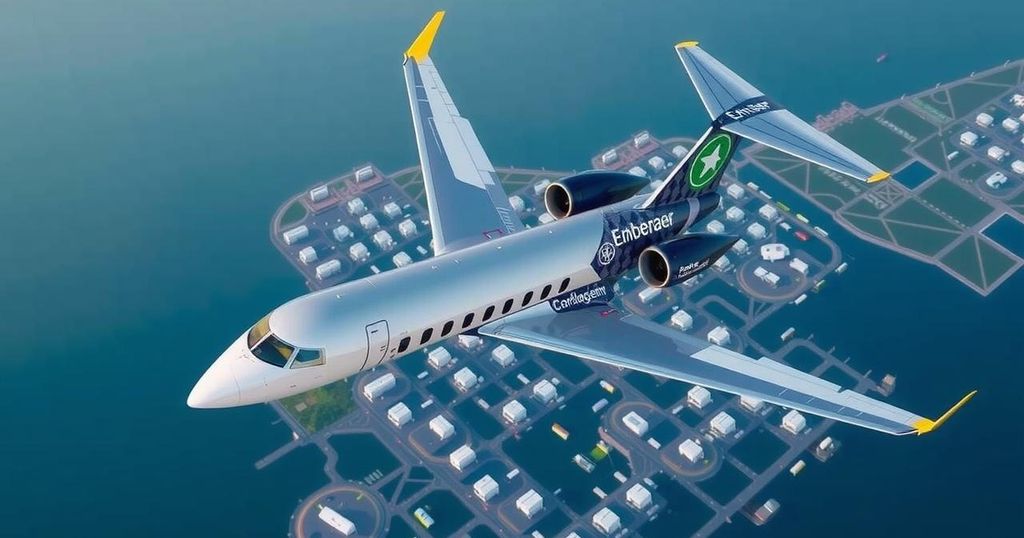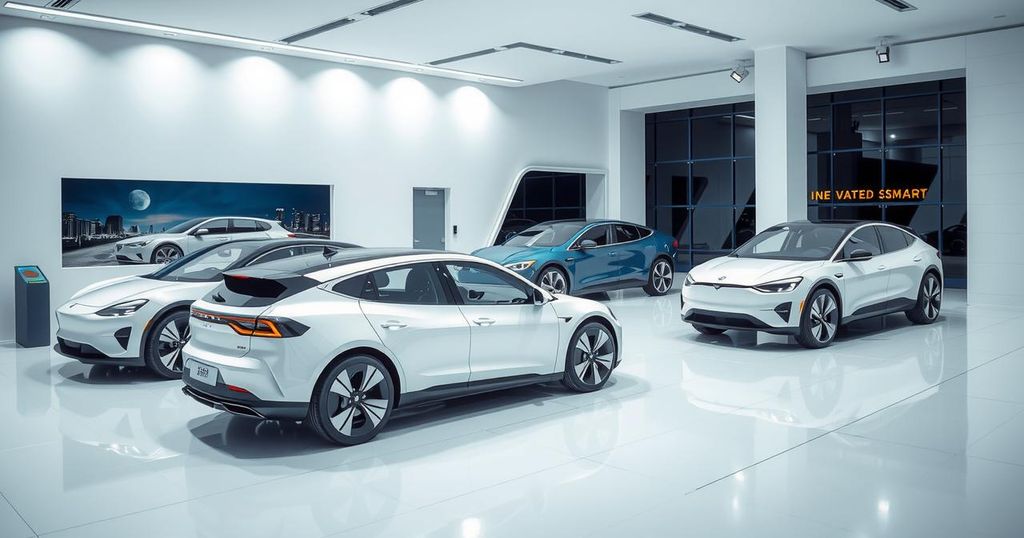Cars
ARJAN MEIJER, ASIA, AUTOMOTIVE INDUSTRY, AVIATION, BRAZIL, CHINA, COMAC, DIGITAL SOLUTIONS, EMBRAER, EMBRAER COMMERCIAL AVIATION, FOREIGN INVESTMENT, INDUSTRY, LU, MEI, MEIJER, MEXICO, NEW YORK CITY, NORTH AMERICA, SOUTH AMERICA, TIBETAN PLATEAU, TRADE, US, XI JINPING
Sofia Rodriguez
0 Comments
Embraer’s Ambitious Strategy for Chinese E-Jet Sales Amid Strengthening Ties
Embraer is ramping up efforts to increase E-Jet E2 sales in China amidst strengthened diplomatic relations between Brazil and China. Company executives emphasize that E-Jets fit a niche in the Chinese market not served by local manufacturers. However, previous attempts to penetrate this market have seen limited success, raising questions about the outcomes of these efforts.
Embraer, the Brazilian aircraft manufacturer, is intensifying its efforts to sell more E-Jet E2 regional jets to Chinese buyers and to establish deeper collaborations with Chinese suppliers. This strategy aligns with Brazil’s increasing diplomatic and economic ties with China, especially as relations between the United States and China appear to be deteriorating. The company’s Chief Executive of Commercial Aviation, Arjan Meijer, communicated during an investor day that the Chinese aviation market presents significant opportunities and emphasized that the E-Jet E2s are appropriately sized to complement the existing fleet of Chinese carriers.
Meijer highlighted that the E190-E2 and E195-E2 models present a market niche not currently fulfilled by Chinese manufacturers, such as Comac’s C909 and C919 jets. The E190-E2 can accommodate 97 to 114 passengers, while the E195-E2 has a capacity of 120 to 146 seats, effectively filling a gap in the market. Furthermore, Meijer noted that the E190-E2 is particularly well-suited for high-altitude operations in China, including connecting services to the Tibetan Plateau.
In a recent initiative, Embraer organized a “supplier day” at the Zhuhai Air Show, which aimed to enhance collaboration with China’s aviation sector. This event underscored Brazil’s robust diplomatic relationship with China, recognized by the World Bank as its principal trading partner. On November 20, it was reported that Brazilian President Luiz Inacio Lula da Silva and Chinese President Xi Jinping formalized approximately 40 new economic agreements across various sectors, which could bolster trade and collaboration between the two nations.
However, the success of Embraer’s ambitions remains in question, as historical context suggests challenges. Aerospace analyst Richard Aboulafia notes that despite past inflated claims of cooperation, actual commercial outcomes have often been limited. He pointed to a prior agreement between Chinese firm AVIC and Embraer that faltered after only a few years of aircraft production.
Despite previously securing around 100 sales of first-generation E-Jets to Chinese airlines, Embraer has faced hurdles in promoting E2 models within China, having recently received certification for these newer jets from the Chinese aviation regulator. A recent order for ten E195-E2s from ICBC, a Chinese lessor, marks a positive step, yet the overall reception of Embraer’s E2 family in China remains uncertain.
In the wake of escalating diplomatic ties between Brazil and China, Embraer has recognized the potential for increased sales in the Chinese aviation market. With the U.S. and China trade relations facing challenges, Brazil’s partnership with China offers an opportunity for Embraer to expand its footprint in the region. The company’s focus on selling its E-Jet E2 models aligns with the needs of Chinese airlines which require regional jets to complement their operations along with domestically produced aircraft from Comac. Understanding the nuances of previous diplomatic agreements and market realities is essential in analyzing the prospects for Embraer in China.
In conclusion, while Embraer seeks to capitalize on the growing aviation market in China through the sale of E-Jet E2 regional jets, skepticism surrounds the feasibility of this endeavor given historical challenges. The strengthening of diplomatic ties between Brazil and China may provide a conducive environment for these sales; however, analysts remain cautious about the tangible outcomes. The company’s recent strategic initiatives reflect its commitment to exploring the Chinese market, yet the actual impact and future sales figures remain to be seen.
Original Source: www.flightglobal.com




Post Comment